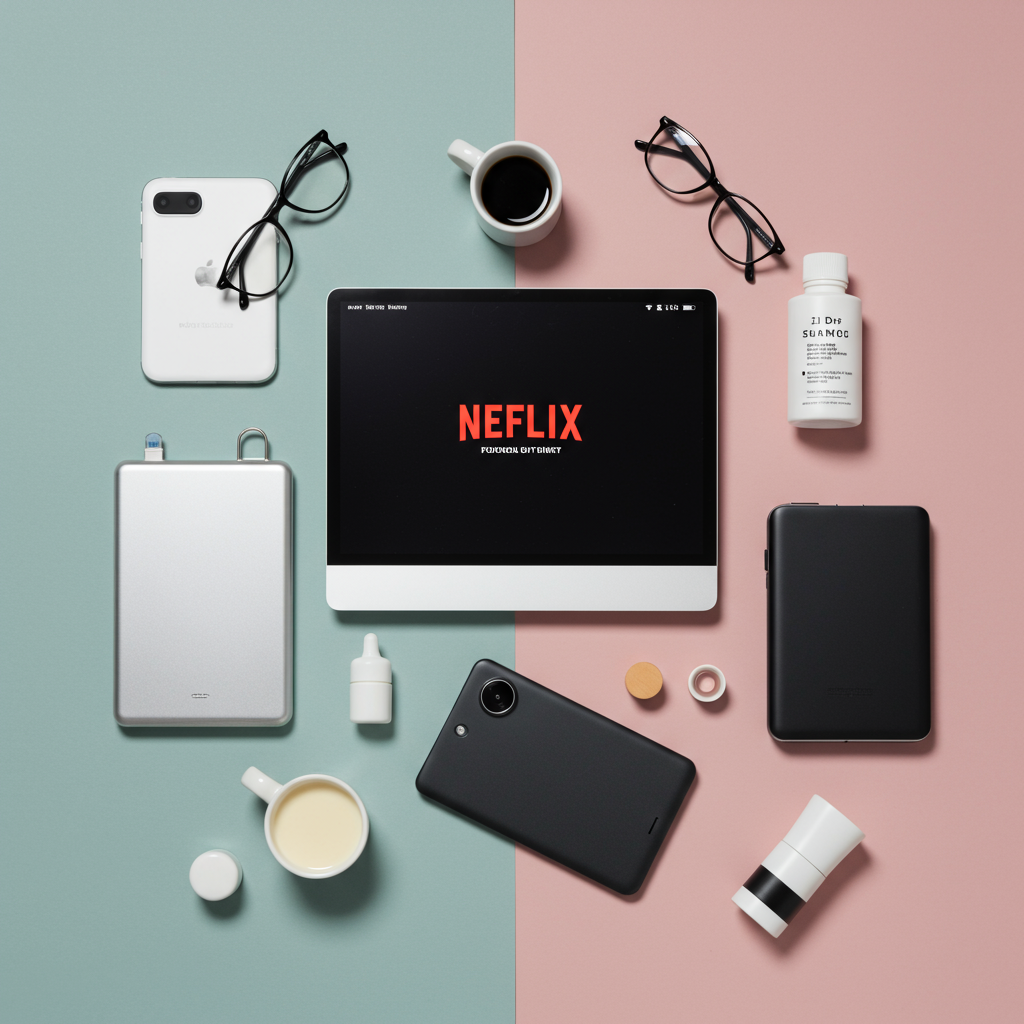In a world constantly buzzing with the “next big thing,” it’s easy to get swept up in the excitement. From groundbreaking tech gadgets and must-watch shows to revolutionary health fads and can’t-miss experiences, marketing and social media often build enormous anticipation. But what happens when reality falls short? It turns out, many widely celebrated trends and products have left people feeling utterly underwhelmed. Community discussions reveal a surprising number of popular things that simply weren’t worth the buzz. Exploring these letdowns offers a candid look at how easily hype can mislead expectations.
Examining the Letdowns: When Popularity Isn’t Enough
Public opinion is powerful, shaping what we perceive as desirable or essential. Yet, individual experiences often paint a different picture. Here’s a look at some highly popular phenomena that, for various reasons, disappointed those who jumped on the bandwagon.
Technology That Didn’t Quite Deliver
The tech industry thrives on generating excitement. New gadgets promise to change our lives. However, not every innovation lands successfully or maintains its initial appeal.
Take the Apple ecosystem, often presented as the pinnacle of user experience and design. For one user, making the switch after years of resisting felt like giving into pressure. They found greater satisfaction and “zero regrets” by choosing a competitor like Samsung instead. This suggests that while popular, the Apple experience isn’t universally superior and personal preference is key.
AirPods quickly became a ubiquitous accessory, praised for their convenience and sleek look. But the hype faded for some as practical issues arose. Users reported poor fit, causing the earbuds to fall out easily. Concerns about audio quality deteriorating rapidly over time also led people back to older headphone styles, like wired or over-ear models. The initial trendiness didn’t guarantee long-term satisfaction or functionality.
Remember the buzz around the Xbox Kinect? Touted as a revolutionary motion-sensing gaming system, it was Microsoft’s answer to the successful Nintendo Wii. Many bought into the concept, only to find it became a dusty gadget after just a few months. This highlights how quickly “gimmick technology” can lose its appeal once the novelty wears off.
Even highly anticipated new products can falter. The Tesla Cybertruck, with its unconventional design, generated massive discussion. One observer simply noted its appearance looked unfinished, comparing it negatively to low-resolution graphics. Visual appeal, or lack thereof, clearly impacted perception despite the vehicle’s futuristic claims.
Cryptocurrency promised to redefine finance and commerce. For some, the concept itself remained confusing and inaccessible. Concerns about the massive energy consumption (“mining”) and the significant, often unrecoverable, financial losses experienced by many investors further eroded confidence. What was presented as a revolutionary future felt more like a volatile gamble not worth the risk for everyone.
Sometimes, even small tech purchases fail to live up to advertised potential. A seemingly effective home drain snake tool marketed on television disappointed one buyer. Instead of the robust tool shown in the ad, they received a flimsy wire with ineffective velcro, too weak to actually clear a drain. This illustrates the common problem of products not matching their marketing hype.
Entertainment That Fell Short
Movies, TV shows, and entire franchises build massive fanbases and expectations. When they don’t stick the landing, the disappointment can be profound.
Game of Thrones captivated millions with its intricate plot and large cast. However, not everyone was drawn into its world. One viewer found it “boring,” criticizing dialogue as either overly pompous or cartoonishly crude. The early death of a favorite character removed the show’s only redeeming quality for them. This suggests that even critically acclaimed series don’t resonate with everyone’s taste.
The multi-season arc of Lost kept audiences guessing for years. While many enjoyed the journey, the highly anticipated series finale proved deeply divisive and disappointing for many. The feeling that writers didn’t have a clear ending in mind left viewers frustrated, even years later. A captivating mystery needs a satisfying resolution to feel complete.
Classic cinema isn’t immune to differing opinions. Citizen Kane, often hailed by critics as one of the greatest films ever, failed to impress one viewer who found it tedious. They suggested some people only claim to like it to appear sophisticated, highlighting how critical consensus doesn’t always align with individual enjoyment.
Long-running animated shows can also lose their luster. Family Guy and similar Seth MacFarlane series were criticized for becoming formulaic. Repetitive jokes made the humor feel stale after the initial seasons, proving that a successful formula needs reinvention to stay fresh.
More recent shows have faced similar scrutiny. Bridgerton Season 3 was a major letdown for some fans despite a two-year wait. Critics felt the season was mediocre and overly complicated, pulling focus from the main character’s story. Frustration also arose over the show’s handling of representation and supporting plotlines that detracted from the central narrative. High anticipation amplified the disappointment when the season didn’t meet specific fan hopes.
Superhero franchises, too, can stumble. While Avengers: Endgame and a subsequent Spider-Man film were praised, the overall direction of the Marvel Cinematic Universe (MCU) afterward disappointed some viewers. Consecutive movies felt like letdowns following the high point of the saga’s culmination.
Even standalone movies hyped with nostalgic returns can disappoint. The Flash movie, despite featuring Michael Keaton returning as Batman, was deemed a “mess” by one viewer who felt it didn’t live up to its advertising or the quality of other DC adaptations.
Mystery readers also faced unexpected endings. One reader of Agatha Christie’s Murder on the Orient Express enjoyed tracking clues but was frustrated by the resolution. The detective solved the case using information revealed only at the very end, contradicting the reader’s efforts to deduce the killer from earlier clues. An unconventional ending, while surprising, can sometimes feel like a cheat to the reader.
Popular sitcoms aren’t universally loved either. Schitt’s Creek, while a major critical and popular success, left one viewer cold. They simply didn’t find it funny and felt pressure to pretend they did because of its widespread acclaim, showing humor is highly subjective.
Lifestyle, Experience, and Food Flops
Expectations aren’t just for products; they shape our views on significant life events, wellness trends, and even everyday food.
Hot yoga, promoted for its detoxifying and flexibility benefits, proved unpleasant for one participant. The experience of extreme heat combined with close proximity to sweaty, smelly bodies was a definite “hard pass.” The reality of the physical environment overshadowed the promised health benefits.
College is often presented as a time of self-discovery and personal growth, the “best years of your life.” For one individual, the reality was starkly different. Their experience was marked by misery, mental health struggles, and a lack of community as a commuter. The degree felt ultimately unhelpful for their career, proving the traditional narrative doesn’t fit everyone, and personal circumstances greatly impact the experience.
Receiving an organ transplant is understandably framed as life-saving and transformative. However, the reality for one recipient involved severe post-operative complications, including rejection, significant weight gain, chronic pain, and ultimately losing the transplanted organ. What seemed like a new lease on life became a source of ongoing medical struggles and disappointment.
Attending music festivals or large outdoor concerts is portrayed as an exhilarating experience. But for one attendee, the reality involved uncomfortable crowds, poor hygiene facilities, exorbitant prices for food and drink, and often subpar sound quality or distracting fellow audience members. The romanticized idea of the festival experience clashed harshly with the practical discomforts.
Even niche trends like running barefoot didn’t live up to their hype. One runner was convinced to try it but suffered painful humiliation and injuries. This demonstrated that trendy health fads aren’t always beneficial or suitable for everyone.
Fast food favorites can also disappoint. McDonald’s French fries, iconic as they are, were criticized for being too thin and lacking substance, with even “large” portions feeling small. Similarly, Chick-fil-A’s chicken was deemed merely “meh” and their fries received specific criticism. The McRib sandwich, despite its limited-time hype, was consistently disappointing for one customer hoping for a better experience. These examples show that even beloved brands have offerings that don’t meet everyone’s standards.
A trip to Disneyland, the “happiest place on Earth,” fell short for one visitor who had heard the hype for years but couldn’t afford it until adulthood. The experience didn’t live up to the decades of built-up expectation, especially given the cost and the contrast with their earlier financial situation.
Turning 50 is often viewed as a significant milestone. However, for one person, the day arrived without the anticipated sense of occasion. It simply felt like any other day, proving that internal experiences of age don’t always align with societal expectations.
Going way back, the Y2K scare generated global panic about potential technology meltdowns at the turn of the millennium. The complete lack of widespread issues made the entire event feel like an overblown, disappointing non-crisis.
Finally, the biggest letdown for many is simply being an adult. Childhood anticipation of freedom and maturity clashes with the reality of responsibilities, challenges, and the sheer difficulty of navigating life independently. The hype of growing up didn’t prepare people for the actual work involved.
Why Do Expectations Crash Against Reality?
Disappointment often stems from a gap between marketing, peer pressure, and individual experience. Marketers create idealized images. Social media amplifies excitement, creating a fear of missing out. When the actual product or experience doesn’t perfectly match this inflated perception, letdown is a natural consequence. Personal taste, specific circumstances (like commuting to college or medical complications after a transplant), and changing trends all play a role. What works for the masses or is popular right now might not align with your needs, preferences, or values.
Frequently Asked Questions
What kinds of things disappointed people most?
Responses covered a wide range, including popular technology like Apple products, AirPods, and gaming consoles, major entertainment releases like specific TV show seasons, movies, and entire franchises, food items from well-known chains like McDonald’s and Chick-fil-A, significant life experiences such as college and turning 50, and trends like hot yoga or even being an adult. The feedback suggests disappointment isn’t limited to one category.
Why do popular things often fail to meet expectations?
Several factors contribute. Heavy marketing and social media buzz can create inflated expectations that no reality can match. Personal preferences and individual circumstances differ greatly; what one person loves, another may dislike or find unsuitable. Trends change rapidly, making yesterday’s must-have obsolete. Sometimes, inherent flaws in a product or experience, like poor design or execution, are only revealed after the initial hype subsides.
How can I avoid getting caught up in hype?
Approach popular things with a critical eye. Research products and experiences beyond marketing materials; look for diverse reviews, including critical ones. Consider your own needs and preferences rather than following trends blindly. Remember that popularity doesn’t equal guaranteed satisfaction. Form your own opinions based on actual experience rather than societal pressure or anticipation.
Beyond the Hype: Finding True Value
Ultimately, navigating a world filled with hype requires a degree of critical thinking and self-awareness. What brings value and satisfaction is deeply personal. While it’s easy to get excited about popular trends, reflecting on whether something genuinely aligns with your interests and provides personal benefit is key. Don’t be afraid to buck trends or admit that something widely loved just wasn’t for you.




